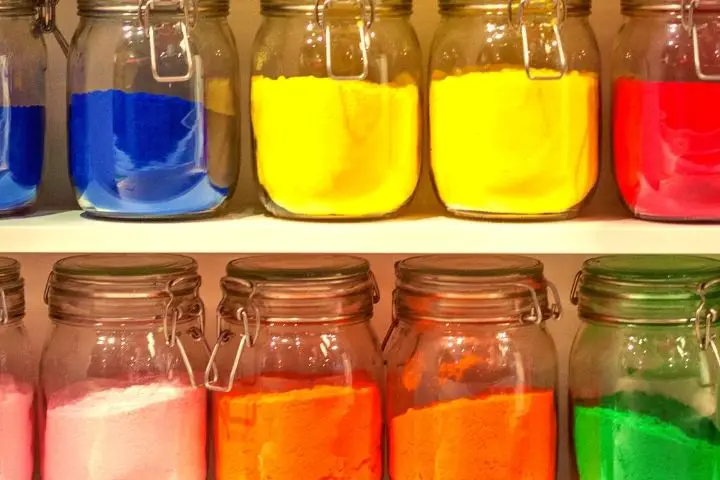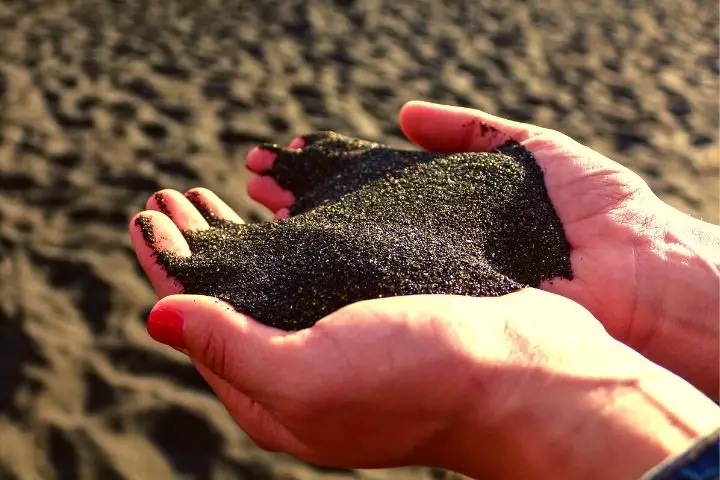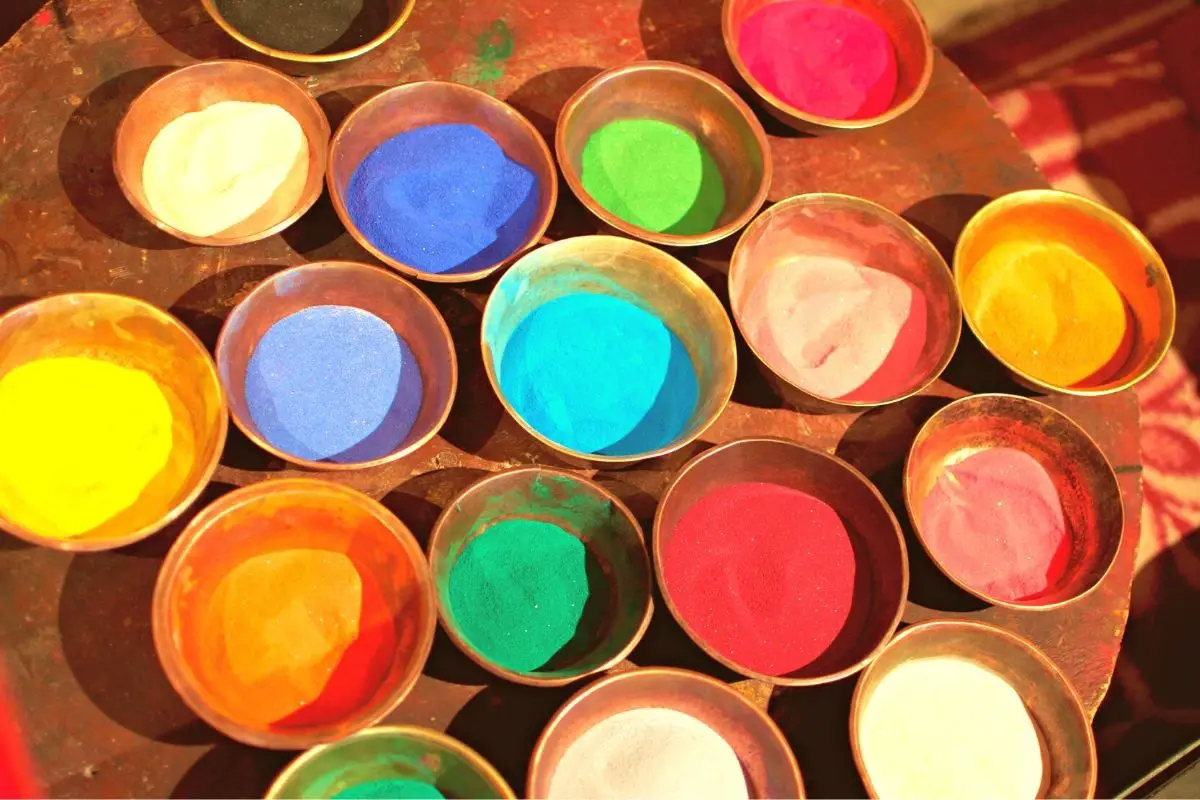Aquarium Sand Colors | All you need to know about adding color to your fish tank
Much of the fun that comes with building an aquarium is the design process (especially if there are kids involved!). While you’re busy picking out aquatic plants and underwater decor, however, don’t forget to choose a sand color that suits your tank aesthetic as well.
Aquarium-safe sand is available in nearly every color imaginable, including more natural options like white and black.
As long as you invest in a substrate that is designed for fish tanks, there’s practically no difference between colored and “normal” sand! But if you’re still feeling hesitant about brightening up your aquarium with one of these products, here’s the lowdown on colored sand and how to use it:
Is Colored Aquarium Sand Safe?
Yes, colored aquarium sand is perfectly safe! But that doesn’t mean ALL colored sand is okay to use in a fish tank.
Be sure that your chosen sand is labelled safe for aquariums and fish. Any sand available at pet or aquarium retailers should be appropriate. Or you can check out some of our favorite aquarium sand options.
How Is Colored Sand Made?
Some colored sand — i.e., natural colors like white, black, or brown may be made by grinding down specific minerals of that color. However, most colored sands are created by bonding colorants to regular sand particles with heat.
Aquarium-safe colored sand is specifically tested to ensure this bond will hold up in an underwater environment. So there’s no need to worry about color leaching into the water or flaking off in your fish tank.
The same can’t be said for some colored play sand and other products. The only way to know if the colorants will survive in an aquarium is to test the sand yourself. And that’s not a risk most aquarists are willing to (or should) take!
8 Aquarium Sand Colors That Will Make Your Tank Shine

As long as you’re using aquarium-safe sand, the ideal color for your tank ultimately comes down to personal choice. So you can fill the bottom of your aquarium with whatever color best coordinates with the fish, plants, and decor inside!
White Aquarium Sand
White aquarium sand is a foolproof choice no matter what types of fish or flora live in your tank. It offers a simple and clean aesthetic that will make unique fish varieties pop. It also reflects light extremely well, which can make your aquarium look bright and sparkly.
For those interested in an all-natural substrate, white sand is a great option. It’s relatively easy to source white aquarium sand made without dyes or colorants. Just keep in mind that it does need frequent fish tank cleaning!
Red Aquarium Sand
Red aquarium sand is a bold substrate choice that looks great in any tank housing a betta, goldfish, or tetra.
If you think red sand is too intense for your aquarium setup, consider mixing this color with white or black sand for a more subdued approach that is equally beautiful.
Blue Aquarium Sand
You can’t get more classic than blue aquarium sand! Use blue sand if you want to create the illusion of a fish tank that is bigger than it actually is. Another awesome trait of this sand color is that it will make the water inside your aquarium appear an otherworldly shade of blue.

Brown Aquarium Sand
Brown aquarium sand comes in several shades. Some brown sand features natural variations that give it the appearance of a river bed or ocean floor. Or you can opt for a uniform color for a tank aesthetic that is natural yet clean-looking.
Pink Aquarium Sand
Pink aquarium sand is undeniably beautiful. It’s a favorite among beta keepers. Even if bright, neon pink isn’t your cup of tea, you may be surprised by how well a more natural shade of pink fits in with your aquarium decor.
Green Aquarium Sand
Green aquarium sand offers the perfect blend between colorful and natural. This sand color is a great option if you want to emphasize the aquatic plants in your fish tank. It will make the entire tank look like an underwater forest!
One thing to note about adding green sand to your aquarium is that this substrate can make it hard to identify algae growth. Green algae easily blend into the sand, making it harder to spot potential water quality problems early on.
Black Aquarium Sand
Black aquarium sand is surprisingly beautiful in the average fresh or saltwater tank. It’s a neutral backdrop that still creates plenty of contrast against your favorite fish. If your aquarium includes coral species, black sand is practically a must!
While aquarium-safe sand comes in all colors, black sand is a great option if you want a colored substrate that doesn’t rely on dyes.

Glow-In-The-Dark Aquarium Sand
Glow-in-the-dark sand or gravel is one of the most unique additions you can make to your fish tank. This substrate looks best when paired with vibrant fish and decor. You can find glow-in-the-dark sand in the classic yellow-green normally associated with glow-in-the-dark products as well as several other colors.
Frequently Asked Questions
Can You Mix Different Sand Colors In An Aquarium?
Yes, you can mix different sand colors in a single fish tank. This can even be a great way to create a unique pattern at the bottom of your aquarium! Just keep in mind that the different colors will mix together over time.
Which Sand Color Is Best For Aquatic Plants?
Any color of sand that is safe for general aquarium use is okay for aquatic plants! There is no particular color that is better or worse for plant health. It all comes down to personal preference and which sand color your plants look best in.
Is Play Sand Aquarium-Safe?
Most play sands are safe for aquariums. However, placing colored play sand in a fish tank comes with some inherent risks. The source of the colorants is not always clear. Even if you can pinpoint the process used to color the play sand, there’s very little chance that it has been tested for aquarium safety.
When using any play sand, you want to avoid those labelled as silica- or dust-free. These sands may contain or be treated with chemicals that are harmful to freshwater, saltwater, or all types of fish tanks. Play sand should also be thoroughly cleaned before being placed in an aquarium.






